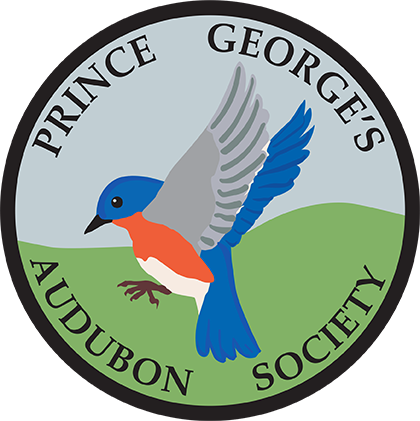David Curson, Audubon Mid-Atlantic’s Director of Conservation, will be meeting with the Secretary of Maryland’s Department of Natural Resources to discuss the restoration and maintenance of Skimmer Island. Here is his letter to the Secretary.
Secretary Jeannie Haddaway-Riccio,
Department of Natural Resources,
580 Taylor Avenue,
Annapolis, MD 21401
By e-mail
Dear Secretary Haddaway-Riccio,
I am writing to you to request action by Maryland Department of Natural Resources (DNR) in
support of rebuilding and maintaining Skimmer Island, a historically important island for
colonial waterbirds in Isle of Wight Bay at Ocean City, using sand dredged from the Ocean City
inlet by US Army Corps of Engineers (USACE).
In recent decades Skimmer Island, managed by DNR as part of the Sinepuxent Bay Wildlife
Management Area, has been one of the most important islands in the Maryland Coastal Bays for
colonial waterbirds, including three species, Black Skimmer, Royal Tern, and Common Tern,
that are now listed as endangered under the Maryland Endangered Species Act (COMAR
03.08.03). These rare and declining species require undisturbed beach habitat in order to nest and
raise young successfully. Skimmer Island declined in size through the 2000s due to erosion, and,
in response, DNR created a private-state partnership which rebuilt the island through sand
nourishment from 2011 to 2104.
Skimmer Island has not been nourished with sand since 2014 and has quickly eroded away. The
last remnant of sand above the high tide line finally disappeared in Fall 2020. For the past three
years no skimmers or terns have been able to successfully nest on the island. As detailed in
Audubon’s Maryland Coastal Bays Colonial Waterbird and Island Report 2019 (see attached),
many other islands in the Coastal Bays are suffering a similar fate, and islands are not naturally
reforming in new locations as they once did from sand deposition. As a result, colonial waterbird
populations are rapidly declining throughout the Coastal Bays, and Black Skimmer and Royal
Tern are on the point of being extirpated as breeding species from Maryland. The situation is
urgent.
Other conservation priorities, in addition to birds, would benefit from the rebuilding of Skimmer
Island. In recent decades the island has been an important horseshoe crab spawning area,
supporting 60% of the Coastal Bays’ breeding population of horseshoe crabs.
This year an opportunity exists to resume the process of nourishing Skimmer Island with dredged
sand in order to return it to its former status as Maryland’s preeminent nesting site for Black
Skimmers and Royal Terns. USACE is currently completing a study of options for the maintenance dredging of the Ocean City inlet and the use of the dredged sand it will yield. We
understand that USACE is seeking a sponsor for the placement of sand on Skimmer Island,
which would meet one of the stated objectives of restoring the Coastal Bays ecosystem in its
1998 Ocean City Water Resources Study. Sand placement on Skimmer Island would also help
DNR realize its obligation to manage populations of endangered colonial waterbirds, and to keep
these species from requiring Federal Endangered Species listing.
We understand that the maintenance and management of Skimmer Island as a nesting site for
endangered terns and skimmers is an ongoing process, requiring a long-term commitment across
future dredging cycles. The island, like most other islands in the Coastal Bays, will continue to
erode, and the only way to ensure that Black Skimmers and Royal Terns remain an essential part
of Maryland’s avian biodiversity is to establish an inter-agency arrangement that integrates
island maintenance with USACE dredging operations.
Audubon would fully support DNR acting as sponsor for the placement of dredged sand on
Skimmer Island at the next opportunity, and this conservation action would be extremely popular
with our network of 35,500 members in Maryland, who care deeply about our state’s wildlife
and the natural areas on which it depends. Beyond the membership of our own organization, it is
estimated that 20% of Maryland’s population consider themselves birdwatchers. Wildlife
watchers in Maryland spend more than $483 million annually on equipment and travel-related
expenses. The Sinepuxent Bay Wildlife Management Area is a tremendous draw because the
birds that nest along Maryland’s Atlantic coast are not common in other regions of our State. To
Ocean City’s 8 million annual vacationers, skimmers’ and terns’ buoyant flight, loud calls, and
dramatic fishing behavior are the avian icons of Ocean City summers.
In 2009, we hosted an event in Ocean City to dedicate the Maryland Coastal Bays as an
Important Bird Area, on account of the colonial waterbird populations the ecosystem supports.
We are proud of the excellent job that DNR does in protecting and managing Maryland’s
wildlife and other natural resources, and urge DNR to partner with USACE in sponsoring the
placement of dredged sand on Skimmer Island this year and through future dredging cycles. We
believe it is critically important that such an arrangement comes about, and would be happy to
meet with you and staff from the Army Corps’ Baltimore District to discuss how we can advance
this important bird conservation action.
Sincerely,
David Curson, Ph.D
Director of Bird Conservation (Maryland)
Cc: Suzanne Biemiller, Executive Director, Audubon Mid-Atlantic


